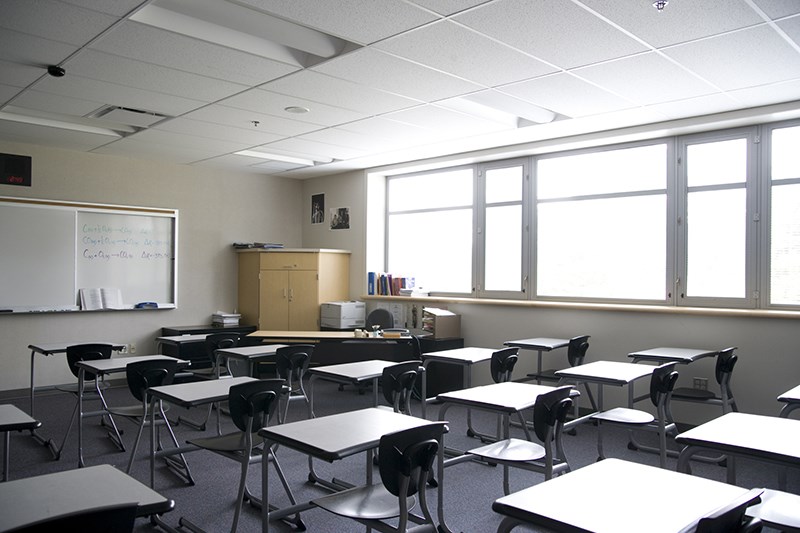School District 43 continues to feel the pressure of larger classes and high numbers of students with special learning needs, resulting in increasingly complex classrooms that the Coquitlam Teachers' Association says are getting harder to manage.
CTA president Charley King was responding to the latest report from the Ministry of Education that shows numerous classes with more than seven students who have special needs and classes with seven or more students who haven't yet mastered the English language.
Both types of students require special programs, pullout classes or extra resources to help them learn.
And King says there isn't enough.
"You're seeing students in more classes more crowded with less one-on-one time and there's no additional resources to help students," said King, who blamed the problem on a lack of funding from the province.
"It's actually about the system needing to keep pace with diverse learners, that's I think what it points to," King said. "There's an increase to diverse learners and the system is not able to keep pace."
The numbers bear out some of King's concerns. For example, in Grades 4 to 12, the number of classes that have seven or more special needs students was 229 while there were 462 classes with seven or more English language learners (ELL). Those numbers are up substantially from 2014/’15.
At the younger grades, kindergarten to Grade 3, there was only one class with seven or more special needs students and one with six, but there were six with four and 20 with three students with special needs. As well, this year there are 175 kindergarten to Grade 3 classes where there are seven or more students who need extra help learning English.
But this is not a new trend.
For some years, SD43 has seen more students with special learning needs, who need modified instruction, called independent education plans (IEP). These are students who have been identified as having a learning challenge, such as a child with autism who is non-verbal and has to use a communication device; or a child who is hard of hearing. Other students who may need modifications to their education program are students with intellectual disabilities, chronic health issues, mental health concerns or physical disabilities, and even children classified as gifted.
There are also more English language learners and both groups get additional funding — but not enough, according to the CTA.
SD43 maintains, however, that while there are challenges and the district could do more with increased funding, students and their teachers are supported in the classroom.
Students who are learning English, for example, will have the assistance of an specialist teacher who may pull them out for a special class or the teacher will get help with strategies to use in the classroom.
"For kids with greater ability in English, that support teacher would provide resources and ideas in the classroom for the classroom teacher to meet the needs of those students," said assistant superintendent Reno Ciolfi.
For students with special needs, there is a school-based team of resource workers, educational assistants and the classroom teacher, who meet weekly to figure out ways to help the student achieve their educational goals.
"Where classes of [high numbers of special needs students] do exist, they are planned for and resources are in place to support students," Ciolfi said.
But why are there so many students learning English or students with special needs in a single class in some schools? Ciolfi said it's how demographics play out. For example, some neighbourhoods have higher numbers of students for whom English is a second language, resulting in more ELL learners in some classes.
Still, he acknowledged that the district is under pressure to make sure all students get a good education.
"The general trend is we had more students on IEPs so that number has increased. We have more English language learners in our district, and the other thing that has increased due to funding limitations, we have one of the highest class size averages in the provinces.
"Those numbers you are looking at are the reflection of those things in concert," Ciolfi said.
For provincial reports, including the latest class size and composition studies, visit here.
BY THE NUMBERS
Number of K-3 classes with more than 7 students with IEPs: 1
Number of K-3 classes with more than 7 ELL students: 175
Number of Grade 4-12 classes with more than 7 students with IEPs: 229
Number of Grade 4-12 classes with more than 7 ELL students: 462
Per-student ELL funding: $1,380
Number of schools in the district: 71
Numbers of ELL students: 2010/’11, 3,971; ’14/’15, 4,495 (this year's figures are not available)



